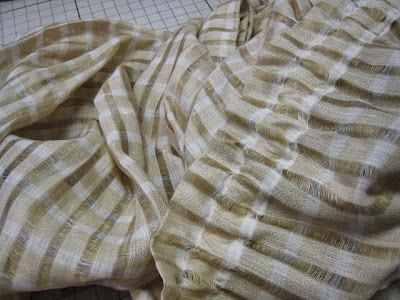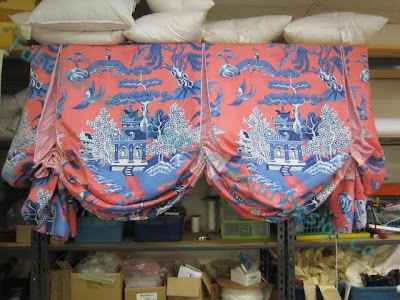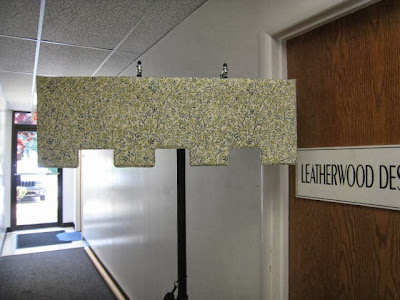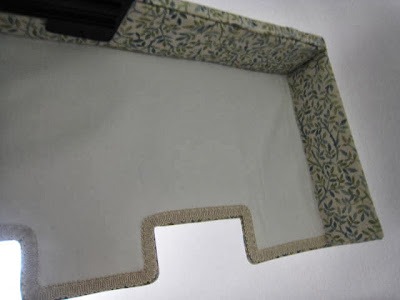The biggest issue was lining. The woven damask pattern completely washed out when sun came through the fabric. To decide on the best lining option, we sewed together 20" of four different lining combinations.
To the right, one layer of napped sateen. Next to that is natural interlining, then dim-out thermal lining, and all the way to the left, khaki napped sateen, all three of those layered between the face fabric and ivory sateen.
When the panel was hung, of course the linings are in the reverse order. On the left, the single layer of napped sateen was very little help in preventing pattern wash-out. To the far right, the khaki layer blocked a surprising amount of sun. In the middle, the two other options were similar, except that the natural interlining enhanced the yellow in the ocher ground to produce a beautiful luminous gold color, and and also lent its rich fullness, which the dim-out could not match. We agreed that natural interlining and ivory lining were the way to go.
For the mockup I wanted to actually sew the shaped goblet pleats, which as you can see I did not get around to tacking; that helped us determine a few other things- first, the 6" deep pleat is just a little too much, as the shadow line falls below the bottom of the window trim; and the more rigid buckram was the best of the 3 options we tested.
Up close we also decided we liked the gold silk for the microcord, but we'll make it a tad bigger so it will show up better.
Also I think that the cutout shape could be a little more exaggerated, so I'll modify my pattern for the real thing. One thing I learned from this trial panel is that it would be much easier to welt the facing rather than the body of the drape. To prevent distortion around the curves, I'll use a fusible fabric stabilizer on the facing. I think I will not cut the shape in the panel until sewing the layers is completed.
Lastly, we both liked the panel puddled- neither of us being "puddle people," we were surprised!



























.jpg)





.JPG)











